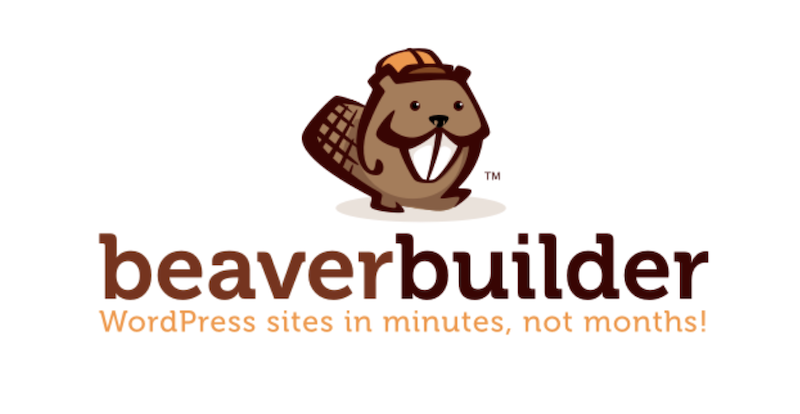
Beaver Builder Plugin vs Elementor Builder Plugin – A Comparison
In the realm of WordPress, page builders have revolutionized how we design websites. Two of the most prominent players in this space are Beaver Builder and Elementor. Both offer unique features and experiences, but choosing between them can be challenging. This article aims to provide a detailed comparison to help you make an informed decision.
Overview of Beaver Builder and Elementor
Beaver Builder
Beaver Builder is a user-friendly, drag-and-drop page builder known for its developer-friendly approach. It’s highly customizable and supports white labeling, allowing developers to brand the builder for their purposes. We have used Beaver Builder on Doorbelltrends.com
Elementor
Elementor, on the other hand, is a visual drag-and-drop page builder designed with professional WordPress designers in mind. It offers advanced design options and has a built-in theme builder, making it a robust option for creating sophisticated website designs. We have used Elementor on itsbreakfasthours.com.
Key Comparisons
1. User Interface and Ease of Use
- Beaver Builder: It offers a simpler and more streamlined interface, making it easier to use, especially for beginners.
- Elementor: While Elementor provides a more comprehensive set of features, its interface may be slightly more complex due to the additional options available.
2. Design Capabilities
- Elementor: Known for its advanced design options, including custom positions, padding, margins, and global settings for colors and typography.
- Beaver Builder: More focused on providing a solid basic framework that can be expanded with custom coding.
3. Widgets and Modules
- Elementor: Offers a wider variety of widgets, enhancing its versatility in design and functionality.
- Beaver Builder: Uses modules, which are less in number compared to Elementor’s widgets but are highly customizable for those with coding knowledge.
4. Theme Building
- Elementor: Comes with a built-in theme builder, allowing for the creation of custom themes without needing to code.
- Beaver Builder: Lacks a built-in theme builder but offers high compatibility with various WordPress themes.
5. Pricing
- Elementor Pro: Generally more affordable, especially with the inclusion of a theme builder add-on.
- Beaver Builder: Can be more expensive, particularly for those looking to utilize its white labeling feature.
6. Developer Friendliness
- Beaver Builder: Highly customizable with code, making it a preferred choice for developers.
- Elementor: While also customizable, it’s more geared towards users who prefer a visual building experience.
7. Popularity and Community Support
- Elementor: Boasts a larger user base, which translates to a broader community for support and shared resources.
- Beaver Builder: Has a loyal user base, with a focus on professional development and customization.
Conclusion
Choosing between Beaver Builder and Elementor depends on your specific needs. If you are a developer or prefer a straightforward, code-friendly builder, Beaver Builder might be the right choice. Conversely, if you seek advanced design options with a user-friendly interface, Elementor could be more suitable. Both builders offer robust solutions for WordPress website creation, but understanding their differences is key to selecting the one that aligns with your website goals and skill level.
Other WordPress Website Builders: Strengths and Weaknesses
In addition to Beaver Builder and Elementor, the WordPress ecosystem is rich with a variety of other page builder plugins. Each brings its unique features and functionalities, catering to different user preferences and requirements. This chapter explores these alternative WordPress page builders, highlighting their strengths and weaknesses.
1. Divi Builder by Elegant Themes
Strengths:
- Visual Editing: Divi offers a true visual editing experience, allowing users to design their pages in real-time.
- Customization: Comes with a multitude of customization options and is highly versatile.
- Built-in Templates: Offers a vast library of pre-designed templates and elements.
Weaknesses:
- Performance: Can be resource-heavy, potentially affecting website loading times.
- Learning Curve: The vast array of features might be overwhelming for beginners.
2. Thrive Architect
Strengths:
- Conversion Focus: Specifically designed for businesses and conversion-focused websites.
- Ease of Use: Offers an intuitive interface, making it user-friendly for beginners.
- Marketing Tools Integration: Seamless integration with various email marketing and lead generation tools.
Weaknesses:
- Limited Design Options: While functional, it offers fewer design options compared to Divi or Elementor.
- Niche Focus: Mainly focused on conversion optimization, which might not appeal to all users.
3. Visual Composer
Strengths:
- Flexibility: Offers a mix of frontend and backend editing capabilities.
- Compatibility: Generally compatible with most WordPress themes and plugins.
- User Access Control: Allows for role-based access control, which is useful for teams.
Weaknesses:
- Interface Complexity: The interface can be less intuitive compared to other builders like Elementor.
- Addon Reliance: For advanced features, reliance on addons may be required.
4. SiteOrigin Page Builder
Strengths:
- Lightweight: Known for being a lightweight builder, which helps in maintaining faster page load times.
- Free Version: Offers a robust free version, making it accessible for users on a budget.
- Flexibility with Widgets: Works well with standard WordPress widgets and SiteOrigin’s own widgets.
Weaknesses:
- Basic Design Options: Lacks advanced design features found in other builders.
- Less Intuitive UI: The user interface is not as modern or intuitive as some of its competitors.
5. Oxygen Builder
Strengths:
- Code Efficiency: Generates cleaner and more efficient code than many other builders.
- Developer-Friendly: Offers advanced features and high customizability for developers.
- Performance-Oriented: Designed to create fast-loading, efficient websites.
Weaknesses:
- Complexity for Beginners: Not as beginner-friendly due to its advanced features.
- Lack of Templates: Fewer pre-made templates compared to builders like Divi.